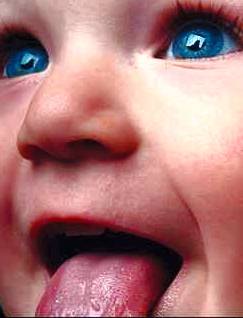5 May 1998
Crack Babies Physically OK
 Media speculation about crack babies peaked several years ago. They were the Calibans of the modern world - ill-begotten, deformed, and probably deranged. Exposed to cocaine in the womb, who could say what monsters they would become?
Media speculation about crack babies peaked several years ago. They were the Calibans of the modern world - ill-begotten, deformed, and probably deranged. Exposed to cocaine in the womb, who could say what monsters they would become?
"Earlier reports indicated prenatal exposure to cocaine resulted in terrible things, both in terms of abnormalities and serious obstetrical complications," comments Marylou Behnke, associate professor of paediatrics at the University of Florida and leader of a new study that dispels many of the myths associated with crack babies. "It appears that whatever effects such exposure has are far more subtle."
According to Behnke's findings, presented at the joint annual meeting of the American Paediatric Society and the Society for Paediatric Research, more than 75 per cent of babies studied had no major abnormalities at all - the same as a group who were not exposed to cocaine in utero.
"[The study's] methodology is sound and it confirms that cocaine is not a major cause of structural birth defects," concludes Deborah Frank, associate professor of paediatrics at the Boston University School of Medicine.
Yet it remains unclear exactly what the long term "subtle" effects of prenatal exposure may be. Behnke herself does not rule out the possibility of "profound impacts later on as these kids get to school age"
Meanwhile, writing in the February issue of the journal Paediatrics, University of Florida researchers have warned of "the potentially devastating effect of a self-fulfilling prophecy on a child who has been so negatively labelled. As researchers, we owe the public the truth, which would afford these children the benefit of hope and individualized care in lieu of negative labels of certain poor prognosis."
According to the National Institute on Drug Abuse, some 45,000 infants exposed to cocaine in the womb are born each year.
